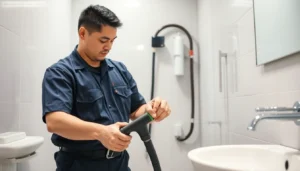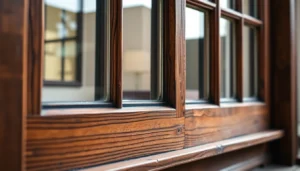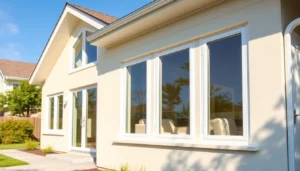Understanding the Role of Local Roofers in Home Maintenance
The roof of a building is more than just a protective shell; it is a crucial component that safeguards your home or commercial property from the elements, contributing significantly to energy efficiency, structural integrity, and overall aesthetics. Ensuring your roof remains in optimal condition requires the expertise of dedicated professionals known as roofers. These skilled tradespeople specialize in the construction, repair, and maintenance of roofs across a variety of materials and styles. For homeowners and business owners alike, understanding what roofers do and how to effectively find qualified professionals is essential to maintaining the longevity and safety of your property. If you’re seeking reliable roofers, this comprehensive guide will equip you with the knowledge you need to make informed decisions.
What Do Roofers Do? Key Responsibilities and Services
Roofers play a vital role in both the initial installation and ongoing maintenance of roofing systems. Their responsibilities encompass a broad range of tasks designed to ensure your roof functions efficiently and withstands environmental challenges. Key services offered by professional roofers include:
- Roof Installation: Installing new roofs using various materials such as asphalt shingles, tiles, metal, slate, or fibreglass. This process involves precise measurement, material selection, and adherence to safety standards to guarantee durability and aesthetic appeal.
- Roof Repair: Addressing issues like leaks, broken tiles, damaged flashing, or deteriorated materials. Timely repairs prevent minor problems from escalating into costly structural damages.
- Roof Maintenance: Conducting routine inspections, cleaning gutters, and replacing worn-out components to extend the lifespan of your roof.
- Insulation and Ventilation: Ensuring proper attic ventilation and insulation work together to optimize energy efficiency and prevent heat loss or moisture buildup.
- Gutter and Flashing Installation: Properly installing and repairing gutters and flashing to channel water away from the structure and prevent leaks.
Comprehensive roofing services also extend to specialized tasks like installing solar panels, flat roofing systems, or green / eco-friendly roofs. Modern roofers adopt innovative techniques and materials to meet the evolving demands of homeowners and the environment.
The Importance of Hiring Certified Roofers
The decision to hire a roofer should be driven by their credibility, expertise, and adherence to safety standards. Certified roofers are trained and qualified according to industry regulations, which minimizes the risk of subpar work that could compromise your property’s safety. Certification programs like those offered by the National Federation of Roofing Contractors (NFRC) or approval from industry-specific bodies such as TrustATrader enhance a roofer’s reputation.
Certified roofers follow strict installation and repair protocols, ensuring your roofing system adheres to local building codes. Their proven expertise translates into higher-quality workmanship, fewer callbacks for rework, and increased warranty protections. Conversely, unlicensed or unqualified roofers may cut corners, use inferior materials, or overlook safety measures, leading to premature failure and increased costs over time.
Common Roofing Materials and Techniques
The choice of roofing material directly impacts longevity, aesthetics, and maintenance costs. Here are some of the most common roofing options:
- Asphalt Shingles: Popular for their affordability, durability, and wide range of styles, asphalt shingles are suitable for most residential properties. Modern asphalt shingles boast increased lifespan and impact resistance, making them a versatile choice.
- Tiled Roofs (Clay or Concrete): Known for their durability and aesthetic appeal, tiled roofs are favored in Mediterranean and traditional styles. They provide excellent weather resistance but are heavier and require a solid supporting structure.
- Metal Roofing: Offered in panels or shingles, metal roofs are lightweight, long-lasting, and highly resistant to extreme weather. They also reflect heat, increasing energy efficiency.
- Slate Roofing: Elegant and highly durable, slate tiles can last over a century with proper maintenance. They require skilled installation due to their weight and specialized handling.
- Fibreglass and Synthetic Roofing: Modern fibreglass membranes and synthetics provide flexible, lightweight, and weather-resistant options suitable for flat or low-slope roofs.
Techniques vary based on material choice, local climate, and building specifications. Skilled roofers employ industry-best practices—such as proper underlayments, secure fastening, and waterproofing—to ensure your roof’s performance and longevity.
How to Find the Best Roofers Near You
Finding qualified roofers in your local area requires careful research and assessment. With numerous providers available, focusing on credibility, reviews, and genuine expertise can save you time and money. Here are proven strategies to identify the best roofing professionals:
Using Local Directories and Reviews Effectively
Online directories and review platforms like Checkatrade, TrustATrader, MyBuilder, or industry-specific registers provide comprehensive listings of local roofers. These platforms often feature customer testimonials, completed project galleries, and ratings that help you gauge each company’s reputation. Sorting by location, services offered, and review scores allows for an initial shortlist.
For example, Checkatrade’s detailed profiles include verified customer feedback, licensing status, and photos of past work, enabling homeowners to make well-informed choices before engaging a contractor.
Questions to Ask Before Hiring a Roofer
To ensure you hire a qualified, reliable professional, prepare a set of questions such as:
- Are you licensed and insured? Can you provide proof?
- What experience do you have with this type of roofing material?
- Can you provide references from recent clients?
- What is your estimated timeline and payment schedule?
- Do you offer warranties or guarantees on your work?
Asking these questions helps clarify the roofer’s credentials, reliability, and commitment to quality, reducing the risk of substandard work.
Getting Accurate Quotes and Pricing Comparisons
Request at least three written quotes from different providers. Be cautious of significantly lower bids, which might indicate the use of inferior materials or corners cut during installation. Ensure that each quote details costs for materials, labor, permits, and additional services. Clear estimates allow for fair comparisons and understanding of the value being offered.
Keep in mind that the cheapest option isn’t always the best. Focus on reputation, quality of materials, and warranty coverage alongside price.
Improving Roofing Longevity: Maintenance and Repairs
Proper maintenance is essential to maximize your roof’s lifespan and avoid costly replacements. Proactive care involves regular inspections, timely repairs, and understanding when professional intervention is necessary.
Regular Inspection and Preventative Care
Conducting biannual inspections—preferably in spring and autumn—can identify small issues before they escalate. Look out for loose or missing shingles, damaged flashing, clogged gutters, or signs of water ingress. Maintaining clean gutters and trimming overhanging branches reduces debris buildup and prevents damage.
Professional inspections offer thorough assessments, including checking for hidden damage, structural integrity, and ventilation issues. Preventative measures like applying protective coatings or installing snow guards in colder climates further extend roof life.
Signs Your Roof Needs Repair or Replacement
Recognizing early warning signs enables you to address problems promptly:
- Visible water stains or mold inside your home.
- Broken or missing shingles or tiles.
- Granule loss from asphalt shingles in gutters.
- Persistent leaks during heavy rain.
- Excessive moss, algae, or lichen growth.
- Sagging or uneven roof surfaces.
When damage is extensive or repairs become frequent, replacing the entire roof may be more cost-effective in the long term.
DIY Tips vs. Professional Roofing Services
Small maintenance tasks, like cleaning gutters or replacing a few shingles, can be safely handled by knowledgeable homeowners. However, complex repairs, structural assessments, or roof replacements should always be performed by certified roofers to ensure safety and compliance with building codes. Improper DIY repairs can jeopardize your safety and lead to further damage.
Benefits of Choosing Trusted and Approved Roofers
Selecting a reputable, industry-approved roofer offers peace of mind and ensures quality work backed by warranties and certifications. Trustworthy roofers adhere to strict standards, use high-quality materials, and provide excellent customer service.
Certification Programs and Industry Standards
Industry certifications like those from the NFRC attest to a roofer’s adherence to safety, quality, and environmental standards. Membership in recognized trade associations often requires ongoing training, ethical conduct, and quality assurance protocols. Certified roofers are also more likely to stay current with emerging technologies and materials.
Customer Reviews and Testimonials
Real feedback from previous customers is invaluable. Look for reviews mentioning professionalism, punctuality, quality, and after-sales support. Verified testimonials offer insights into the roofer’s consistency and reliability, making them a better choice over less transparent counterparts.
Warranty and Post-Repair Support
Reputable roofers provide warranties covering both materials and workmanship. This ensures that if issues arise post-installation or repair, you receive prompt support without additional costs. Post-project support, including inspection and maintenance advice, further prolongs your roof’s life.
Innovations and Sustainable Options in Roofing
The roofing industry continually evolves with technological advances and an increasing focus on sustainability. Modern solutions improve performance, reduce environmental impact, and add long-term value to properties.
Latest Roofing Technologies and Materials
Innovations such as cool roofing materials that reflect sunlight, self-healing asphalt, and lightweight composite shingles enhance durability and energy efficiency. Green roofs, with vegetation layers, contribute to urban cooling and biodiversity, while solar-integrated panels offer renewable energy options.
Eco-Friendly and Energy-Efficient Roofing Solutions
Eco-conscious choices include recyclable materials, reflective coatings, and insulated systems that decrease heating and cooling costs. Installing solar panels or integrating rainwater harvesting systems further reduce environmental footprints.
Future Trends in Roofing Industry Standards
As sustainability becomes a core industry value, future standards will emphasize eco-friendly construction, increased use of renewable materials, and smart roofing technologies that monitor system health. Industry regulators are also likely to tighten safety and quality standards, benefitting consumers through higher accountability.



